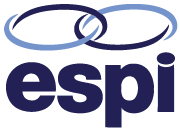5S Standardize (Seiketsu 清潔)
With the first three steps of 5S completed, the effects and benefits of 5S can be clearly seen. Time wasted looking for needed tools has been greatly reduced and in certain cases totally eliminated. Safety hazards from clutter and debris no longer exist. Early maintenance is keeping equipment humming and reliably producing needed products.
What more needs to be done?
As with any program, success is dependent on the expectations, guidelines and continued monitoring of the program. 5S is not a spring cleaning activity that can be performed once and forgotten. If it is not maintained, the facility will return to the way it was. The fourth step in 5S is to make your 5S practices permanent. This is accomplished by standardizing the processes of Sorting, Straightening and Shining so it becomes second nature to everyone.
5S Standardize - Making Good Practices Into Good Habits
The 5S practices developed in steps one through three should be standardized and made easy to maintain. Develop a work structure and written standards that will support the new practices and make them into habits. To maintain the program, establish clear expectations. Make the expectations visual. An effective visual tool is to use the photographs taken in the first three steps. Create a 5S board for each area. Post the photo of the area before starting the 5S process, then posts the photos showing the incremental progress after each step. Finally, post the photo the ideal setup after completing the Sort, Straighten and Shine steps. This posting board can serve as a reminder for what will happen if the 5S program is not maintained, and it provides a visual record of the expectations going forward.
5S Standardize - Use Standards To Change Habits
One of the hardest steps in 5S is changing old work habits. It's easy for people to slip back into what they've been doing in the past. That's what everyone is familiar with. It feels comfortable, but those habits need to be changed. An important element of the Standardization step is to develop standard daily practices. Each employee should have clear expectations for putting everything away after use and for cleaning during and at the end of each shift.
Develop a work structure, and written standards, that will support the new practices and make them into habits. Making people aware of these new standards and helping them to remember them correctly is commonly done using labels, signs, posters and banners. The labels and signs are not just used to help people remember the standardized 5S practices. They are an integral part of every aspect of 5S. When you think 5S, think visual communication. For example:
- Using visual cues is the most effective way to communicate needed information. That's why a shadow board, mentioned in the “5S Set In Order” step, is so effective. It uses color labels in the shape of each tool to make identifying tool storage locations incredibly easy.
- With 5S everything should be clearly marked and identified. Labels and signs are the best way to identify storage locations, work areas, equipment, tools, and separate pathways for foot and motorized traffic.
- Labels and signs provide operating, cleaning, and preventive maintenance procedures at the locations where that information is most needed; on the equipment and machines.
- Many companies adopt standards detailing what materials, tools and resources each work area requires. These standards are typically compiled in a binder or posted on visual boards within the work area. By placing the standards in the work area along with photos of the proper organization, anyone in the company can visually inspect the organization of an area at any time. These include:
- Checklists - 5S checklists are commonly used as an auditing tool to ensure that the standards are being followed. A 5S checklist involves more than verifying that work areas are clean. Each item on the checklist should enable the user to ensure that the operating and maintenance practices that support 5S goals are being followed.
- Job Cycle Charts - A job cycle chart lists each 5S task that is to be done in a work area and lists the schedule (frequency cycle) for performing each task. Each task is either assigned to a particular worker, or to a job duty. Whoever operates the machine that day has the task of cleaning that machine at the end of the shift.
- Scheduling of "five-minute" 5S periods - A "Five Minute 5S Period" can be an intense, quick clean up of a work area, or it help individuals to look for abnormalities in all of the five steps of 5S. The goal is for abnormalities to be spotted and immediate action to be taken to correct the abnormality.
The "Five Minute 5S" does more than fix 5S problems. The main objective is to train workers in the principles of 5S. Having workers do a "Five Minute 5S" helps them to focus on the priorities of 5S and to remind them of the principles that underlie a successful program.
Join us next week for the last of the 5S techniques - Sustain (躾, Shitsuke)


No comments:
Post a Comment